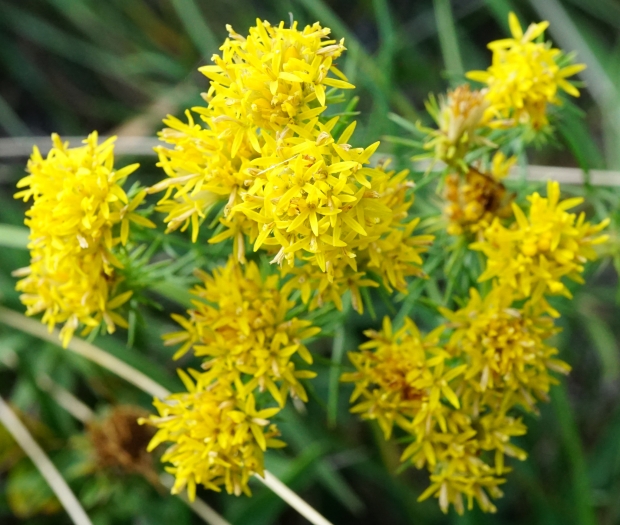Goldilocks Aster
(Aster linosyris)
Goldilocks Aster (Aster linosyris)
/
/

Patrick Hacker
CC BY 4.0
Image By:
Patrick Hacker
Recorded By:
Copyright:
CC BY 4.0
Copyright Notice:
Photo by: Patrick Hacker | License Type: CC BY 4.0 | License URL: http://creativecommons.org/licenses/by/4.0/ | Rights Holder: Patrick Hacker | Publisher: iNaturalist | Date Created: 2021-09-28T16:34:11-07:00 |

























Estimated Native Range
Summary
Aster linosyris, commonly known as Goldilocks Aster, is a perennial herb native to a range of habitats including dry grasslands, rocky outcrops, and open woodlands across Europe and Asia Minor. This species typically grows 4-20 inches tall and is characterized by its bright yellow disk florets that bloom from July to September, creating a showy display despite the absence of ray flowers. The plant has narrow, lanceolate leaves and produces achenes as fruits.
Goldilocks Aster is valued for its late summer to early autumn flowering period, providing color when many other plants have finished blooming. It is well-suited for rock gardens, borders, and wildflower meadows, and is particularly attractive to pollinators such as bees and butterflies. This plant prefers well-drained soils and can tolerate drought, making it a low-maintenance choice for gardeners. It thrives in full sun to partial shade. While generally not prone to serious pests or diseases, it can suffer from root rot if planted in poorly drained soils. In cultivation, it is important to avoid overwatering and to provide adequate spacing to prevent mildew.CC BY-SA 4.0
Goldilocks Aster is valued for its late summer to early autumn flowering period, providing color when many other plants have finished blooming. It is well-suited for rock gardens, borders, and wildflower meadows, and is particularly attractive to pollinators such as bees and butterflies. This plant prefers well-drained soils and can tolerate drought, making it a low-maintenance choice for gardeners. It thrives in full sun to partial shade. While generally not prone to serious pests or diseases, it can suffer from root rot if planted in poorly drained soils. In cultivation, it is important to avoid overwatering and to provide adequate spacing to prevent mildew.CC BY-SA 4.0
Plant Description
- Plant Type: Herb
- Height: 1.5-2 feet
- Width: 1.5-2 feet
- Growth Rate: Moderate
- Flower Color: Yellow
- Flowering Season: Summer, Fall
- Leaf Retention: Deciduous
Growth Requirements
- Sun: Full Sun
- Water: Low
- Drainage: Medium, Fast
Common Uses
Border Plant, Butterfly Garden, Drought Tolerant, Low Maintenance, Rock Garden
Natural Habitat
native to a range of habitats including dry grasslands, rocky outcrops, and open woodlands across Europe and Asia Minor
Other Names
Common Names: Goldilocks Goldenrod, Goldilocks
Scientific Names: , Aster linosyris,
GBIF Accepted Name: